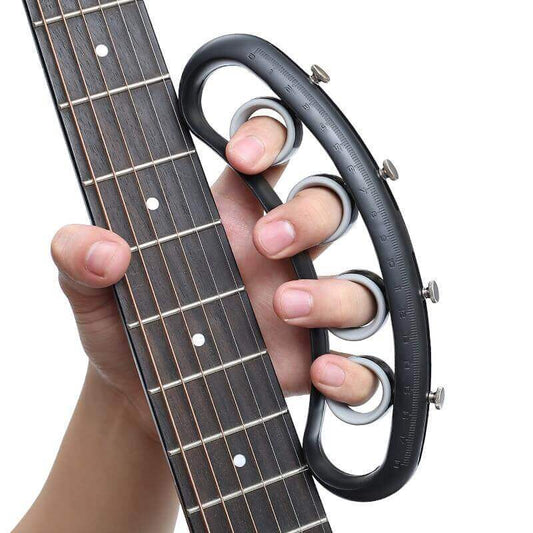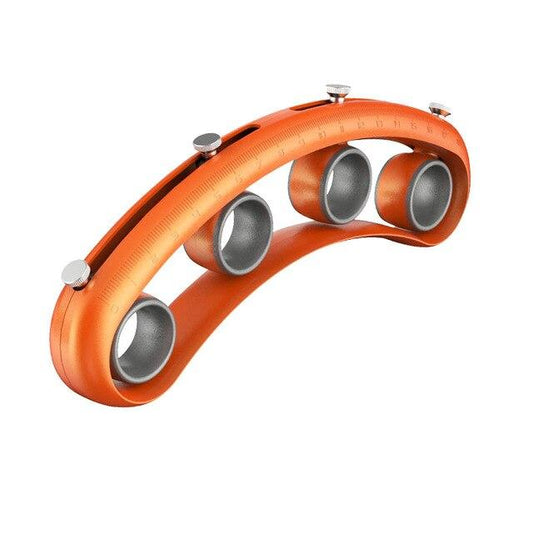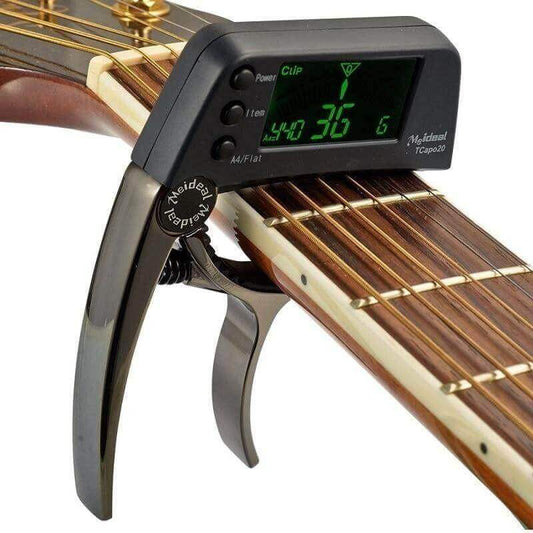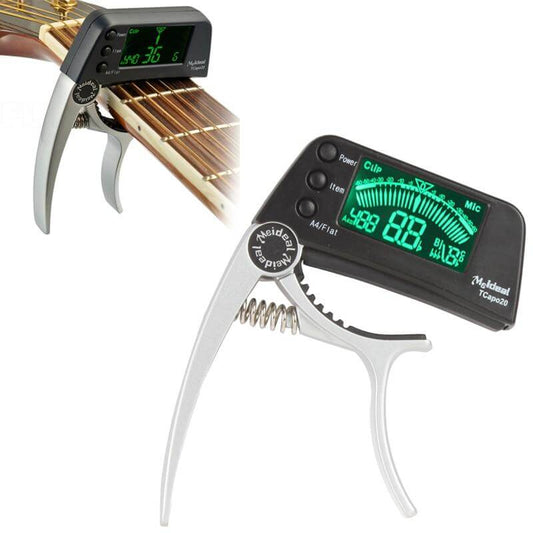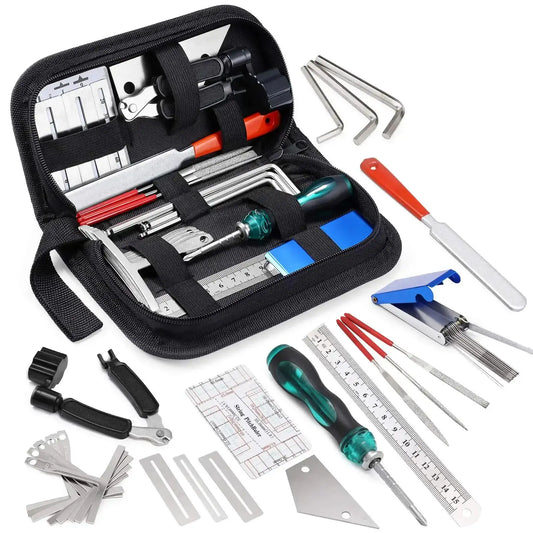Imagine this: You’re at your favorite open mic night, guitar in hand, feeling confident. Someone calls out for a jam in A Dorian, and suddenly, you're scrambling. You know A minor, you know A major—but A Dorian? That’s when the realization hits: guitar modes are the missing link in your playing.
Don’t worry—you’re not alone. Modes can feel like some esoteric secret passed around in jazz circles or progressive rock bands, but in reality, they’re accessible to every guitarist. When I first tried to learn guitar modes, I felt like I had discovered the Rosetta Stone of music theory. They unlocked melodies, colors, and emotions I had been chasing for years.
Today, let’s dig into the world of guitar modes, how you can use them in your practice routine, and how they’ll make you a better musician.
What Are Guitar Modes?

At their core, modes are scales with distinct flavors. They’re built by reordering the notes of the major scale. Each mode starts on a different degree of the major scale and has its unique sound.
Here’s the rundown of the seven modes, all derived from the major scale:
-
Ionian (Major Scale) – Happy, bright.
-
Dorian – Minor with a jazzy edge.
-
Phrygian – Dark and exotic.
-
Lydian – Dreamy and uplifting.
-
Mixolydian – Bluesy and dominant.
-
Aeolian (Natural Minor) – Melancholic, introspective.
-
Locrian – Dissonant, tense.
Each mode has a personality, and part of your journey as a guitarist is learning to speak their languages fluently.
Take your guitar skills to the next level with FretDeck’s innovative learning tools and explore our exclusive eBooks packed with expert tips, techniques, and practice strategies tolearn guitar modes and transform your playing!

My First Brush with Modes: A Personal Story

When I was a teenager, I was obsessed with classic rock. One day, my guitar teacher introduced me to Santana’s “Oye Como Va.” I thought I was playing the minor pentatonic scale, but my teacher smiled and said, “That’s Dorian.”
Dorian? It sounded minor, but there was a brightness to it. My teacher explained that the raised sixth note was the key difference, and from that day forward, I was hooked. Dorian wasn’t just a scale; it was a vibe. It became the first mode I learned to apply consciously, and it completely changed how I approached solos.
Using Guitar Modes in Your Practice Routine

To truly understand modes, you have to integrate them into your practice. Here’s how to get started:
1. Start with Familiar Shapes
If you already know your major scales, you’re halfway there. Modes are just the major scale starting on a different note. For example, the D Dorian mode uses the same notes as the C major scale but starts on D.
Exercise:
- Play the C major scale starting on D. Focus on emphasizing D as the tonal center.
- Listen for the unique sound. That’s Dorian.
2. Build Muscle Memory with Modal Patterns
Each mode has a distinct pattern across the fretboard. Practice these patterns, but don’t just play them mechanically. Focus on the sound of the mode as you play.
Exercise:
- Choose a mode (e.g., G Mixolydian).
- Play it in one position on the fretboard, then move it through different octaves.
- Use a metronome to gradually increase your speed while keeping clean technique.
3. Create Modal Chord Progressions
Modes shine when you use them over the right chords. For example, A Dorian fits beautifully over a progression like Am7 – D7 – Gmaj7.
Exercise:
- Pick a mode and build a simple progression.
- Improvise over the progression using the mode.
- Record yourself and listen back. Did you capture the mode’s character?
4. Use Backing Tracks
Nothing beats the real-world application. Find backing tracks in specific modes to get a feel for how they work in context.
Recommended Practice:
- Play over a Dorian backing track.
- Try emphasizing the raised sixth to highlight the mode’s unique sound.
- Experiment with phrasing and dynamics.
How Modes Transformed My Playing

A few years ago, I played lead guitar in a fusion band. Our bassist was a jazz wizard, and he loved throwing curveballs like Phrygian or Lydian progressions into our jams. At first, I was overwhelmed. But one night, during a late rehearsal, I decided to dive into the Lydian mode over a Cmaj7(#11) chord.
It was a revelation. The #4 (or #11) in Lydian gave the solo a floating, ethereal quality. Our keyboardist turned to me mid-solo and said, “That’s it. That’s the vibe.”
From then on, I wasn’t just playing notes—I was painting with modes.
Practice Modes Creatively

Modes aren’t just scales; they’re tools for expression. Here are a few creative ways to practice:
1. Compose Modal Riffs
Write a riff in a specific mode. For instance:
- Lydian works great for dream-like melodies.
- Mixolydian is perfect for funky grooves.
2. Transcribe Solos
Listen to solos from your favorite players and figure out which modes they’re using. Joe Satriani, for example, is a master of Lydian.
3. Experiment with Hybrid Modes
Combine modes to create unique sounds. For example, mix Dorian with the pentatonic scale for a jazzy-bluesy vibe.
Why Modes Matter

Modes do more than expand your scale vocabulary—they deepen your connection to music. They allow you to:
- Create Unique Melodies: Modes offer a fresh palette for crafting solos and compositions.
- Improvise with Confidence: Knowing which mode fits a progression gives you more freedom to explore.
- Communicate with Other Musicians: Understanding modes makes it easier to jam and collaborate.
A Practical Example: Modes in Action
Imagine a progression like E – F – G. This isn’t a standard major or minor progression—it’s Phrygian. When you solo over it, use the E Phrygian mode to capture the mysterious, exotic vibe of the chords.
Join the Guitar Freaks Hangout
Ready to dive deeper into guitar modes? Join the Guitar Freaks Hangout on Discord, where guitarists from around the world share tips, jam ideas, and feedback. It's a supportive community for players of all levels. Plus, you’ll get access to exclusive resources like modal backing tracks and live Q&A sessions with pro guitarists.

Final Thoughts
Guitar modes aren’t just for shredders or jazz players—they’re for anyone looking to elevate their playing. By incorporating modes into your practice routine, you’ll unlock new sounds, emotions, and creative possibilities.
So, grab your guitar, pick a mode, and start exploring. Who knows? That next jam session might be your chance to steal the spotlight.
Justin Comstock, Host of the Guitar Freaks Podcast
Justin is a Blues guitarist from Utah. He created a guitar learning tool called the FretDeck on Kickstarter that has helped many guitar players master the fretboard. He is also the host of the Guitar Freaks Podcast.
Download Free Guitar Charts










